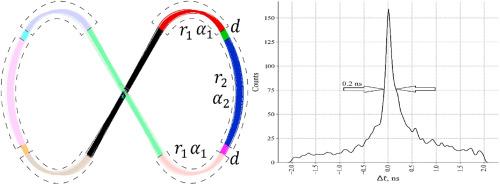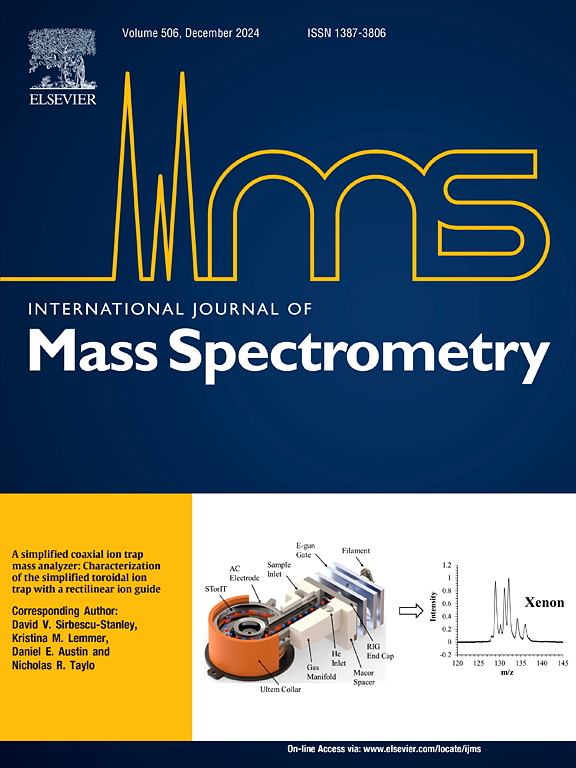用像差法计算静电TOF质量分析仪与SIMION仿真结果的比较
IF 1.7
3区 化学
Q3 PHYSICS, ATOMIC, MOLECULAR & CHEMICAL
引用次数: 0
摘要
近年来,高分辨率飞行时间质量分析仪(TOF-MA)得到了广泛的发展。它们的开发需要提供非常精确的电场离子轨迹计算工具,因为在毫秒飞行时间(10 - 10%)的数百皮秒的误差已经导致结果的明显扭曲。计算这类系统的主要工具是像差理论,但它在计算精度上有局限性,因为它是基于一系列的展开,并且考虑到下一阶展开会使公式变得非常复杂。在此基础上,以扇形静电场下TOF-MA离子轨迹计算为例,将像差理论计算结果与Simion建模结果进行了比较。对比结果表明该程序适用于多转质分析仪(MT-MA)计算的可能性。利用开发的程序,计算了分辨率为47万的MT-MA。本文章由计算机程序翻译,如有差异,请以英文原文为准。

Comparison of the results of the aberration approach for the calculation of electrostatic TOF mass analyzers with simulation in SIMION
In the last few years, high-resolution time-of-flight mass analyzers (TOF-MA) have been intensively developed. Their development requires tools that provide very accurate calculation of ion trajectories in electric fields, since an error on the scale of hundreds of picoseconds at millisecond flight times (10−10 %) already leads to noticeable distortions of the result. The main apparatus for calculating such systems is the aberration theory, but it has a limitation in the accuracy of calculations, since it is based on expansion in a series, and taking into account the next order of expansion significantly complicates the formulas. In this regard, using the example of calculating ion trajectories for TOF-MA with sector electrostatic fields, a comparison of the results, obtained using the aberration theory was carried out with the results of modeling in Simion. Results of the comparison indicate the possibility of applicability of the program for calculating multi-turn mass analyzers (MT-MA). Using the developed program, MT-MA with a resolution of 470,000 was calculated.
求助全文
通过发布文献求助,成功后即可免费获取论文全文。
去求助
来源期刊
CiteScore
3.60
自引率
5.60%
发文量
145
审稿时长
71 days
期刊介绍:
The journal invites papers that advance the field of mass spectrometry by exploring fundamental aspects of ion processes using both the experimental and theoretical approaches, developing new instrumentation and experimental strategies for chemical analysis using mass spectrometry, developing new computational strategies for data interpretation and integration, reporting new applications of mass spectrometry and hyphenated techniques in biology, chemistry, geology, and physics.
Papers, in which standard mass spectrometry techniques are used for analysis will not be considered.
IJMS publishes full-length articles, short communications, reviews, and feature articles including young scientist features.

 求助内容:
求助内容: 应助结果提醒方式:
应助结果提醒方式:


